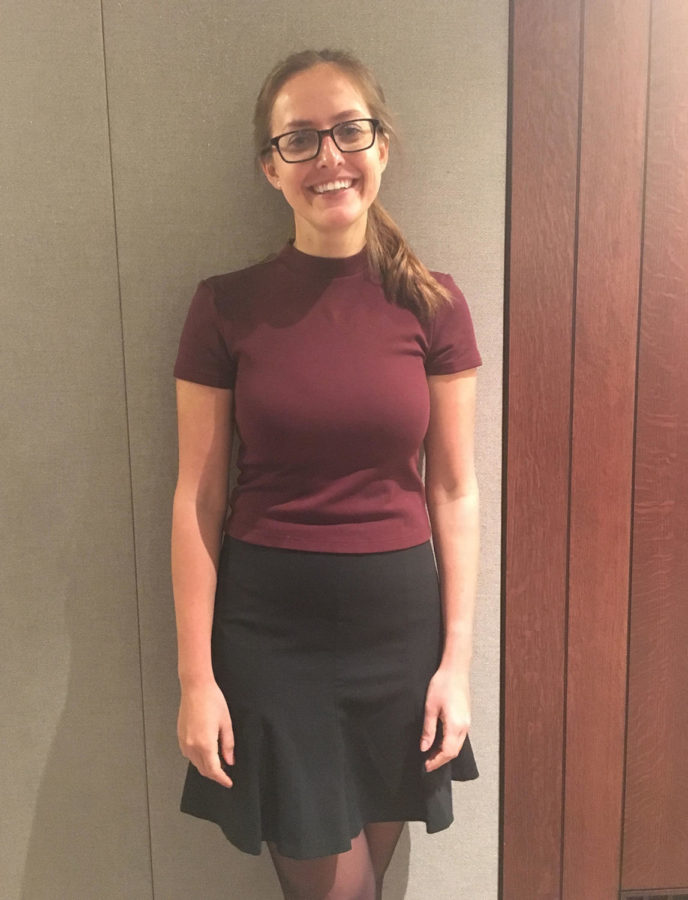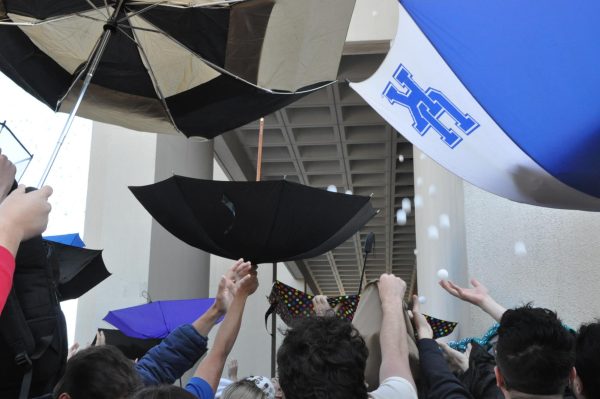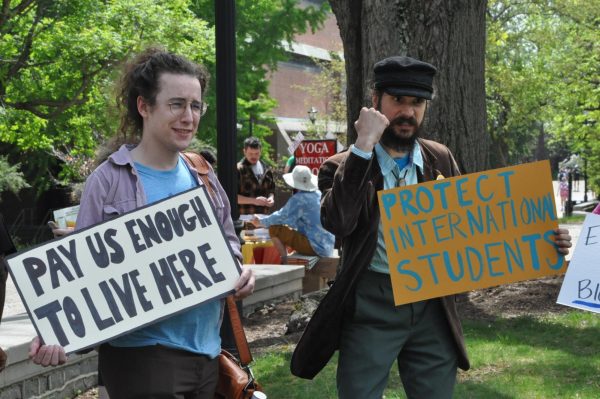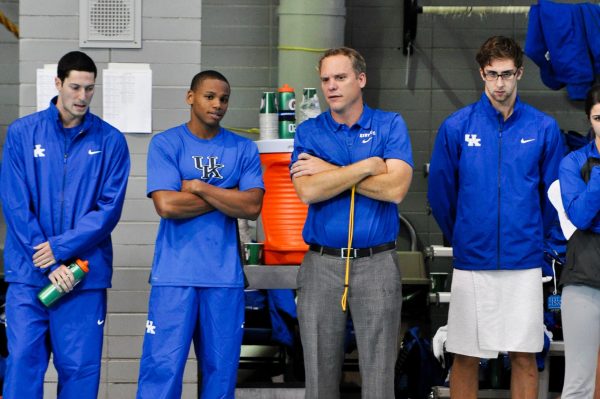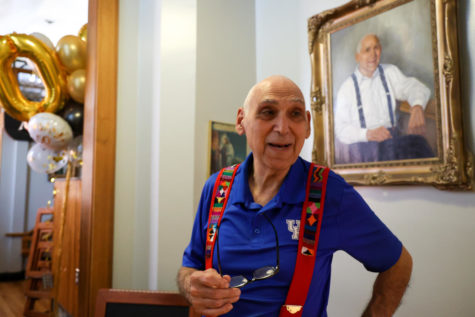Reliving tragedy to prevent another
Kristina Anderson, above, is the adviser for the LiveSafe app and works with victims of mass shootings after experiencing a campus shooting in at Virgina Tech.
March 31, 2016
When Kristina Anderson walked into her French class in Norris Hall on the morning of April 16, 2007, the most thought-out decision she had made that day was whether to wear her Rainbows-brand shoes on that snowy Virginia morning.
Now, when she walks into an airport, a building, or especially a classroom, she considers her exits and ways to barricade herself from an active mass shooter.
Anderson was shot three times when an active shooter committed the deadliest campus shooting in American history, killing 11 of her classmates, her professor, and 20 other people at Virginia Tech.
She was one of eight people in her classroom who survived, and now she is the executive director of the Koshka Foundation for Safe Schools and adviser for the LiveSafe app, which is one of the tools used by the UK Police Department to keep campus safe.
As a freshman Anderson used to hide from the fire marshals during drills and was not concerned with her safety on campus. She said she never considered the possibility of a shooting at Virginia Tech, and recalled thinking that it was a prank when the perpetrator made it into her classroom.
She had considered skipping her French class after waking up late, but because language classes check attendance she decided she couldn’t skip.
She described Norris Hall as a fortress, and the perfect place to keep people in because there were only three exits, the windows were hard or impossible to open and get out of, and the walls were thick.
Anderson can recall that she sat in the back of the room, and remembered where a few of her other friends sat in the room, but she could not remember what they were studying that day or most of the other events of the morning.
One thing she did remember from that morning was concern about two deaths in the West Ambler Johnston dormitory. The shooter had committed the double homicide earlier that morning, what Anderson in hindsight said was a test of what he thought he was capable of doing.
A female student from the dorm made it to Anderson’s class, a sign Anderson had taken for an all-clear. She and Anderson were two of the last people in the building before the doors were chained, and only a note on the doors saying a bomb would go off if someone tried to unchain them foreshadowed what would happen.
When the first shots went off, Anderson said the noise was loud, urging her professor to open the door to check on what had happened. Moments later, her professor and some of her other classmates rushed to try and block the door when the assailant entered the room.
To Anderson, getting shot feels like a hot pinch. When it stops there is a dull burning. The body’s reaction is enough that one can sit there and take it. For Anderson, who was shot twice in the back and caught a ricocheted bullet in the foot, it is a familiar feeling.
The first time he was in her classroom, Anderson said the shooting lasted seconds. He left and returned twice before taking his own life. Police were in her classroom in about 12 minutes.
When the SWAT team entered, Anderson thought it was strange that the lead officer’s first words were, “We have a lot of blacks in here.” Per SWAT tactical code, civilians are one of four colors: green (alive, uninjured), yellow (injured, non-life threatening), red (critically injured), and black (deceased).
Two steps into the room, the officer had assessed that the assailant had taken out more than half of the room.
A couple of classrooms faired better because they were able to barricade the door to their classrooms. Two girls from room 205, which Anderson said was a math classroom, walked out into the hallway to quiet what they thought was construction, and were shot at before running back into the classroom. The shooter went for their door, but they had barricaded it from the inside. He shot through the middle of the door, but luckily the students holding the desk in place were not behind the middle of the door.
When Anderson was finally taken out of the classroom by SWAT she repeatedly told the emergency responders, “Thank you,” not knowing what else to say.
She said her life is forever changed. Though she got her degree in International Studies, Anderson works now to improve safety at schools with risk prevention and emergency plans programs.
She has worked with victims from other mass shootings, including survivors or family members of victims from Columbine High School and Sandy Hook Elementary.
“Each time, even now, when I hear about shootings it takes you back to your experience and you kind of relive it,” Anderson said. “I was motivated to figure out why and how I could prevent the next one from happening.”
Anderson said her work now is primarily aimed at equipping students and faculty to notice signs in people’s behavior that may signal they are at risk of hurting themselves or others.
Verbalization of threats, even if off-hand, were the first part of the progression toward an attack. Listening to these comments and reporting them to the Community of Concern at UK was her first suggestion to students on how to prepare themselves.
“The proper response when people see something that’s happened or a mass shooting is to stop and ask themselves, ‘What were the facts, why did this happen, who was this person and was there any information before hand (that suggested why)?” Anderson said. “In most cases, there is always a history and there are always a few people who had information that wasn’t reported.”
According to Anderson, the Virginia Tech shooter went to a gun range before the shooting and workers at the gun range remembered him because they thought it was strange that he put the targets on the ground instead of at eye level, knowing that the students would be on the ground.
He had been pulled over for a traffic stop a week before the attack. Students acknowledged after the fact that he behaved strangely at parties (stabbing a semi-circle around himself with a knife), and teachers had reported his strange behavior, but didn’t include his name on the reports.
Anderson talked before a packed crowd at the W. T. Young Library auditorium Wednesday night, and encouraged students to download the LiveSafe app and take a proactive response to her story, by reporting behavior before it becomes a tragic incident.












































































































































